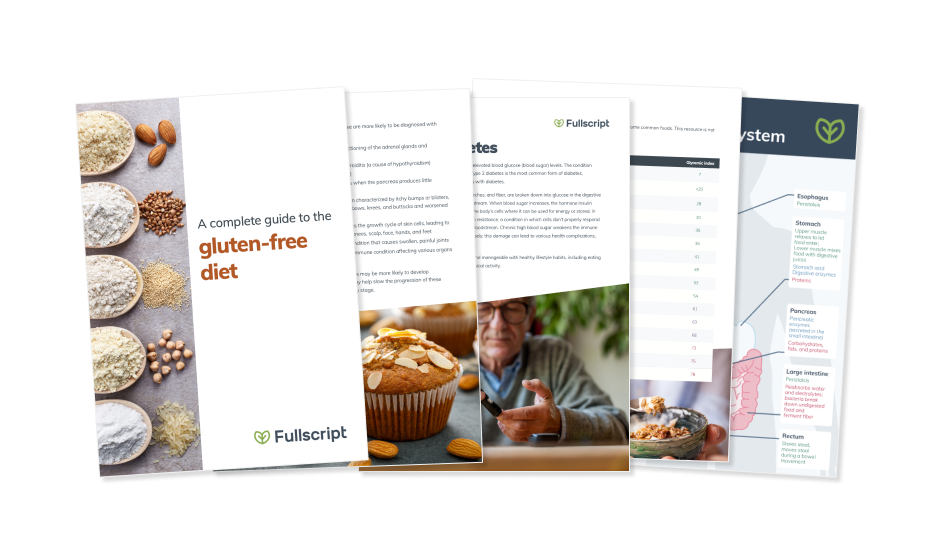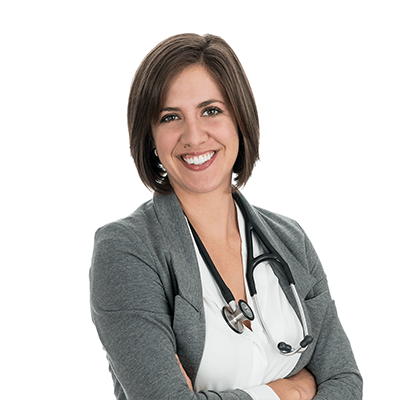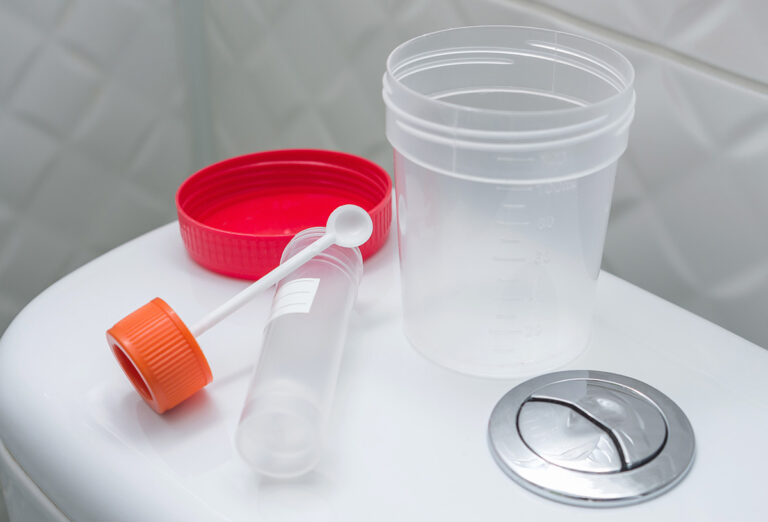Patients obtain health information from a myriad of sources outside of their practitioner’s office, including print media, television, radio, podcasts, social media, and more. Unfortunately, these sources often provide inaccurate, misleading, or biased information. It’s common for patients to feel overwhelmed and confused by the abundance of conflicting information available to them; therefore, providing patients with evidence-based, easy-to-comprehend health education can help them reach their desired outcomes by enhancing patient health literacy and patient engagement. (16)
Approximately 80% of premature deaths are attributed to factors such as tobacco use, poor diet, and low physical activity. (13) Considering that the majority of premature deaths can be prevented through diet and lifestyle modifications, practitioners play a critical role in influencing patient behavior and outcomes through education. (14)
Read on to learn more about the benefits of utilizing education resources in your practice and the actionable steps you can take to provide high-quality patient education.

Top 3 benefits of using patient education materials
Education materials help educate patients and reinforce essential information for condition management, disease prevention, self-care, and more. Outlined below are some of the benefits of utilizing patient education materials in your practice.
1. Improves health literacy
Personal health literacy, defined by the U.S. Department of Health and Human Services, is “the degree to which individuals have the ability to find, understand, and use information and services to inform health-related decisions and actions for themselves and others.” (17) Limited health literacy disproportionately affects lower socioeconomic and minority groups and is common among patients with limited English proficiency, low education, or cultural barriers to healthcare. (11)(16)
Boost health literacy with 150+ evidence-based handouts for your patients
Providing accurate, accessible, and actionable health information can help improve health literacy among your patients. (4) Ensure your patients fully comprehend their health condition and treatment plan and give them the knowledge they need to confidently play an active role in their own health by employing the following strategies:
- Speak clearly and slowly.
- Ask patients to explain your instructions back to you.
- Define all technical terms in plain, simple language.
- Identify patients with low health literacy.
- Offer accessible content for individuals with hearing or visual impairments
- Offer to assist patients with completing forms and other paperwork.
- Organize information and recommendations in order of importance.
- Provide patients with educational resources relevant to their condition and treatment plan (e.g., videos, handouts, graphics).
- Provide resources in other languages for patients with limited English proficiency.
- Use universal symbols (e.g., icons of specific body parts, prescription bottle). (11)
Did you know? According to the U.S. Department of Education, only about 12% of English-speaking adults have proficient health literacy skills. (16)
2. Enhances treatment adherence
Educational strategies, such as providing written or online materials, have shown to be highly effective in improving treatment plan adherence, defined as the extent to which a patient’s behaviors follow an agreed-upon prescription or therapeutic regimen. (2)(6) Fullscript has embedded a comprehensive library of evidence-based materials in our treatment plan tool to make teaching patients a seamless experience for everyone.
The launch of this feature is based on a deep dive of adherence literature by Fullscript’s Medical Advisory Team. One example of such research comes from a 2013 meta-analysis and systematic literature review stating patient education increases treatment plan adherence by 16% compared to a more modest increase of 10% among other adherence-improving strategies. (3)(7)
3. Improves patient outcomes
Education empowers patients to take a more active role in their care and condition management, leading to more desirable clinical outcomes. (10) Evidence suggests that patients who have higher patient activation, in other words, those who have the confidence and understanding to be actively engaged in their healthcare, experience better health outcomes. (5)

Using patient education materials in your practice
Learn how to establish your own library of health education materials or consider using Fullscript’s in-app resource library to share materials directly with your patients.
1. Develop patient education materials
When developing patient education materials, it’s important to consider that they’re appropriate for patients of various comprehension levels and cultural and ethnic backgrounds. Before creating education materials, conduct a needs assessment and establish learning objectives. The best types of patient education resources are the ones that suit the needs of your practice (e.g., videos, handouts, pamphlets, podcasts, presentations, models or props) and provide the information that is most relevant to your patients. (12)
As you produce education materials, don’t forget to consider the quality and readability of your materials, which are influenced by content, style, layout, color, font size, and images. (9) High-quality education materials should also:
- Explain the causes, risks, and typical course of a condition or disease
- Explain the risks and benefits of specific treatment options
- Include the latest evidence-based information with citations
- Provide clear recommendations and explain the reasoning behind recommendations (15)
Ultimately, educational materials should be designed to improve patient knowledge and to support a stronger relationship between you and your patient.
2. Use Fullscript’s evidence-based handouts and other patient resources
A downside to creating your own collection of patient educational resources is the time and resources required to develop and design them. To assist healthcare providers and enhance patient education, Fullscript’s Medical Advisory Team has developed an extensive and expanding library of evidence-based patient handouts covering a wide range of topics such as nutrition, physical activity, lifestyle, and supplements.
These resources are now seamlessly integrated into your Fullscript account. You can find them in the new Resource library, which houses over 100 guides, handouts, and infographics for you to save and attach to your next treatment plan. You can also save your favorite resources so they are accessible from the treatment plan tool when writing recommendations for other patients.
Taking advantage of these free resources is simple and convenient. Follow the steps below to get started:
- Sign in to your Fullscript account and select “Resource library” from the first drop-down menu (titled “Recommendations” or “Prescriptions”) to discover resources for your patients. You can also access them directly from a treatment plan.
- Explore the resources sorted by nutrition, lifestyle, physical activity, and more. Save your favorites to your customizable library.
- Attach a patient handout to your next treatment plan to boost adherence and save time with your most complete treatment plan yet.

3. Display education materials in waiting rooms
Presenting patient education materials in waiting and exam rooms is an effective strategy for reinforcing and illustrating important health-related information. One study assessing the benefits of patient education materials in waiting rooms demonstrated that these resources significantly improve patient-practitioner interactions and augment patient knowledge and self-management. 94% of respondents in one study stated that they read patient education materials in the office and 45% reported taking these resources home with them. Furthermore, 34% said that the materials helped improve their health-related knowledge and self-management. (8)
4. Review materials with your patients
Don’t assume that your patients read the materials you provide. During your visit, review the information with your patient and/or their caregiver. It can help to circle or highlight critical information and outline specific care instructions. To foster patient engagement, encourage future appointments and send follow-up communications. (1)
The bottom line
Providing patients with evidence-based educational materials can help improve treatment adherence, patient outcomes, and health literacy. Developing a comprehensive library of high-quality materials can be a time-consuming and labor-intensive feat for many practitioners. Healthcare providers can now utilize Fullscript’s in-app resource library to easily share handouts, infographics, and other resources to level up their patient education.
Improve patient outcomes with Fullscript’s free supplement planning platform
- Agency for Healthcare Research and Quality. (2015). Use health education material effectively: Tool #12. https://www.ahrq.gov/health-literacy/improve/precautions/tool12.html
- Anderson, L. J., Nuckols, T. K., Coles, C., Le, M. M., Schnipper, J. L., Shane, R., Jackevicius, C., Lee, J., Pevnick, J. M., Choudhry, N. K., O’Mahony, D., & Sarkisian, C. (2020). A systematic overview of systematic reviews evaluating medication adherence interventions. American Journal of Health-System Pharmacy, 77(2), 138–147.
- Bailey, R., Knee, C., English, J., & Keller, A. (2021). Treatment adherence in integrative medicine. https://fs-marketing-files.s3.amazonaws.com/clinical-guides/treatment-adherence-in-integrative-medicine.pdf
- Centers for Disease Control and Prevention. (2019). National action plan to improve health literacy. https://www.cdc.gov/health-literacy/php/develop-plan/national-action-plan.html
- Centers for Disease Control and Prevention. (2021). Health Literacy Research and Best Practices. https://www.cdc.gov/health-literacy/php/research-summaries/patient-engagement.html
- Chakrabarti, S. (2014). What’s in a name? Compliance, adherence and concordance in chronic psychiatric disorders. World Journal of Psychiatry, 4(2), 30.
- Demonceau, J., Ruppar, T., Kristanto, P., Hughes, D. A., Fargher, E., Kardas, P., de Geest, S., Dobbels, F., Lewek, P., Urquhart, J., & Vrijens, B. (2013). Identification and assessment of Adherence-Enhancing interventions in studies assessing medication adherence through electronically compiled drug dosing histories: A systematic literature review and meta-analysis. Drugs, 73(6), 545–562.
- Devroey, D., Moerenhout, T., Borgermans, Schol, Vansintejan, J., & van de Vijver. (2013). Patient health information materials in waiting rooms of family physicians: Do patients care? Patient Preference and Adherence, 7, 489.
- Farrell-Miller, P., & Gentry, P. (1989). Professional development. The Diabetes Educator, 15(5), 418–422.
- Fereidouni, Z., Sabet Sarvestani, R., Hariri, G., Kuhpaye, S. A., Amirkhani, M., & Kalyani, M. N. (2019). Moving into action: The master key to patient education. Journal of Nursing Research, 27(1), e6.
- Health Resources & Services Administration. (2019, August 13). Health literacy. https://www.hrsa.gov/about/organization/bureaus/ohe/health-literacy/index.html
- National Institutes of Health. (2021). Choosing effective patient education materials. https://medlineplus.gov/ency/patientinstructions/000455.htm
- Paterick, T. E., Patel, N., Tajik, A. J., & Chandrasekaran, K. (2017). Improving health outcomes through patient education and partnerships with patients. Baylor University Medical Center Proceedings, 30(1), 112–113.
- Patient education. American Academy of Family Physicians. (2000). American family physician, 62(7), 1712–1714. https://www.aafp.org/afp/2000/1001/p1712.html
- Sustersic, M., Gauchet, A., Foote, A., & Bosson, J. L. (2016). How best to use and evaluate patient information leaflets given during a consultation: A systematic review of literature reviews. Health Expectations, 20(4), 531–542.
- U.S. Department of Health and Human Services. (2010). National action plan to improve health literacy. https://health.gov/sites/default/files/2019-09/Health_Literacy_Action_Plan.pdf
- U.S. Department of Health and Human Services. (2021). Health literacy in healthy people 2030. https://health.gov/our-work/national-health-initiatives/healthy-people/healthy-people-2030/health-literacy-healthy-people-2030





